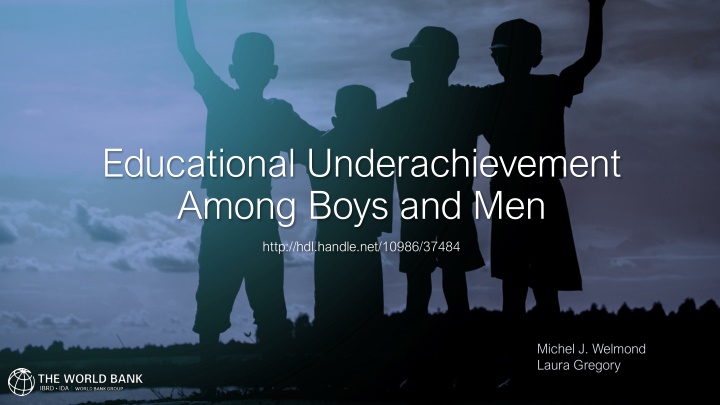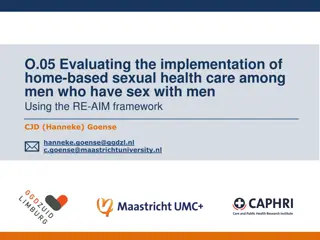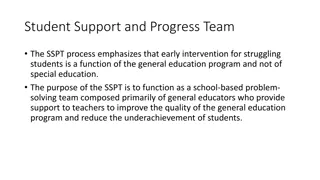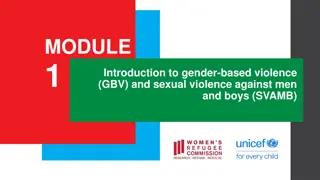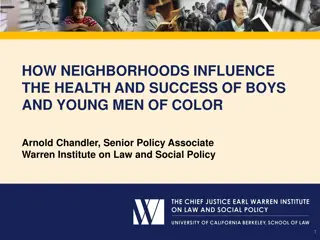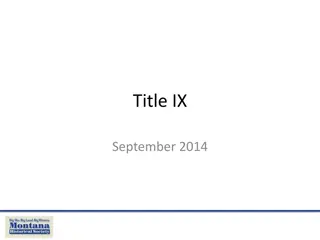Educational Underachievement Among Boys and Men
Boys and young men in over 100 countries face challenges in secondary and tertiary education enrollment, with higher learning poverty rates compared to girls. Factors contributing to male educational underachievement, including labor market influence, social norms, and characteristics of the education process, are explored in this comprehensive study.
Download Presentation

Please find below an Image/Link to download the presentation.
The content on the website is provided AS IS for your information and personal use only. It may not be sold, licensed, or shared on other websites without obtaining consent from the author.If you encounter any issues during the download, it is possible that the publisher has removed the file from their server.
You are allowed to download the files provided on this website for personal or commercial use, subject to the condition that they are used lawfully. All files are the property of their respective owners.
The content on the website is provided AS IS for your information and personal use only. It may not be sold, licensed, or shared on other websites without obtaining consent from the author.
E N D
Presentation Transcript
Educational Underachievement Among Boys and Men http://hdl.handle.net/10986/37484 Michel J. Welmond Laura Gregory
2 In > In >100 countries, boys are less likely to be enrolled in secondary education and 100 countries, boys are less likely to be enrolled in secondary education and young men are less likely to be enrolled in tertiary education young men are less likely to be enrolled in tertiary education Gender gap (boys - girls) in tertiary education gross enrollment ratios (percentage points) Educational Underachievement Among Boys and Men
3 Learning poverty rates are higher for boys than girls in almost all countries with data Learning poverty rates are higher for boys than girls in almost all countries with data Educational Underachievement Among Boys and Men
4 Framework for examining causes of male educational underachievement Framework for examining causes of male educational underachievement Labor market influence Social norms Characteristics of the education process (teaching & learning) Educational Underachievement Among Boys and Men
5 Characteristics of the education process: Powerful contextual factors Characteristics of the education process: Powerful contextual factors Some differences in noncognitive skills but they are malleable and depend on environment Little/mixed evidence on differences in inherent motivation to achieve in school Pedagogies that appeal to boys are just as girl-friendly and constitute quality teaching Schools/classes with more girls tend to have positive disciplinary climates and create a greater sense of belonging Boys more affected by school quality, more harmed by bad schools, and more likely to gain from good schools Educational Underachievement Among Boys and Men
6 Characteristics of the education process: Engaging boys in the learning process Characteristics of the education process: Engaging boys in the learning process Evidence-based learning theories and approaches provide rationale for focusing on engagement, particularly for those at risk of low achievement (predominantly though not exclusively boys) School leadership / whole-school, systematic approaches to improve school climates Reading programs variety of texts and space to talk and reflect Alternative, non-formal education pathways Educational Underachievement Among Boys and Men
7 Thank you! Educational Underachievement Among Boys and Men
